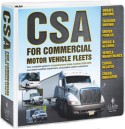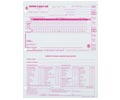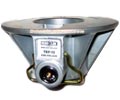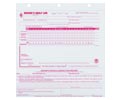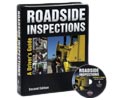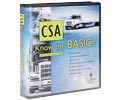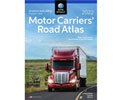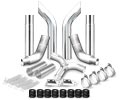The FMSCA Audit, Correctly known as the "Compliance Review"
A Federal Motor Carrier Safety Administration (FMCSA) compliance review involves the examination of "factors" to determine your compliance with the regulations. The key is documentation. You may do all the required steps to comply with the regulations, but if it is not documented, it will appear that you are not. The six factors are:
- Factor 1 — General
- Factor 2 — Driver
- Factor 3 — Operational
- Factor 4 — Vehicle
- Factor 5 — Hazardous materials
- Factor 6 — Accidents
If the auditor discovers violations during the compliance review, he/she will decide (based on regulatory guidance) if the violations are acute, critical, or "other."
- Acute violations are violations severe enough that the presence of a single violation requires immediate corrective action by the auditor and the carrier.
- Critical violations are proof of a pattern of poor safety management controls. Critical violations will not affect the compliance review rating until they reach a level of ten percent non-compliance.
- Other violations are violations that are found that are neither acute nor critical. They will have no affect on the compliance review rating. However, you can be fined for all violations found during the compliance review.
Factor 1
Factor 1 will review your compliance with the financial responsibility, accident register, and false documents and statements regulations. The auditor will first need to see your proof of insurance in the form of either a MCS-90 (endorsement for motor carrier policies of insurance for public liability), MCS-82 (motor carrier surety bond for public liability), or proof of a self-insurance decision from the FMCSA.
The auditor will then ask to see your accident register. The accident register must contain information on all accidents involving death, injury, or vehicles being towed from the scene due to disabling damage. Your register must contain all FMCSA accidents you (or any of your trucks) were involved in during the previous three years. Fault or preventability has no bearing on the accident register. It must contain all accidents meeting the FMCSA definition of an accident.
The auditor will have a copy of your “profile,” which will contain (among other things) all FMCSA defined accidents you have been involved in during the previous 30 months.
During the entire compliance review the auditor will be verifying all statements and documents you provide. This is due to the regulatory requirement that you be truthful with all statements and documents.
The acute violations in Factor 1 are not meeting the minimum insurance levels and providing false documents or statements to the auditor. The critical violations in Factor 1 are failure to have proof of insurance available at the primary place of business and failing to maintain copies of all accident reports as required.
Factor 2
Factor 2 reviews your compliance with the driver regulations. Owner operators are required to fulfill the requirements of both owner, and driver, when those terms are used anywhere in the regulations.
The auditor will review your drug and alcohol program. This portion of the review will include checking for a written policy (even if you are the only employee), a pre-hire drug testing program, not allowing a driver to drive until the carrier has verified negative results for pre-hire tests, post accident drug and alcohol testing, a reasonable suspicion drug and alcohol testing program, a supervisory training program, and a random drug and alcohol testing program. In the case of owner operators with only one truck and driver, the driver will need to be placed into a “consortium.” A consortium is a “random pool” made up of drivers from companies who are members of the consortium.
The auditor will also want to see that the carrier (you) immediately removed from safety sensitive functions any driver that failed a test, refused a test, or participated in prohibited activity.
As part of the review of Factor 2 material the auditor will also review your driver qualifications. Remember, the auditor will be verifying that the “carrier” and the “drivers” are compliant with the regulations, even if the carrier and the driver are the same person.
The auditor will be checking to see that each driver has completed the entry-level driver training (if required), taken a road test (or has the equivalent on file), one driver’s license issued by their home state with the correct classes and endorsements, had their driving record checked when hired and a minimum of once a year thereafter, and reported all traffic convictions, suspensions, revocations, or disqualifications.
The auditor will also check that the carrier did not use drivers with suspended licenses, did not use drivers that have not passed (or cannot pass) a FMCSA physical, is using an employment application that “asks the right questions,” is doing background and safety performance history investigations on new drivers, and is maintaining a qualification file that documents all the activities listed above.
Critical violations in Factor 2 include using a driver before receiving negative pre-employment drug test results, failure to conduct post accident drug and alcohol testing or to meet the required percentages, using a driver who has engaged in prohibited drug and alcohol activities, not adhering to follow-up testing schedule for a driver in a return-to-work program, allowing a driver to operate a commercial vehicle without the correct license, using a driver not medically examined and certified, failure to maintain a driver qualification file on drivers, and failure to maintain proof of qualification in driver qualification file.
Acute violations in Factor 2 are most drug and alcohol violations, using a driver who does not have a valid or proper CDL due to a suspension, revocation, or disqualification, using a driver that has multiple CDLs, and using a driver who is physically or otherwise disqualified.
Factor 3
During the review of Factor 3, the auditor will examine your compliance with the rules of safe operation and the hours-of-service regulations. The auditor will be looking for incidents of operating unsafe equipment, driving when ill, fatigued, or under the influence, operating illegally to comply with scheduling, driving when cargo is not secured and properly distributed, and drivers not submitting required logs, operating over the hour-of-service limitations, or submitting false logs.
During this portion of the review you will need to provide the auditor with “supporting documents” to compare to the drivers’ logs to locate false logs. Supporting documents are any documents kept in the course of business that can prove or disprove the accuracy of drivers’ logs. When this factor is scored, violations involving hours of service will “count double.” Acute violations in Factor 3 are allowing a driver to operate while under the influence of drugs or alcohol. The critical violations are violations of any of the other regulations covered in this factor.
Factor 4
Factor 4 reviews the maintenance of vehicle or vehicles. You must have a program that “systematically” inspects, maintains, and repairs all commercial vehicles under your control. Repairing out-of-service vehicles before operation, operating only vehicles that have had their periodic (annual) inspection, completion of driver vehicle inspection reports, and repairs of driver-reported defects are all audit points in Factor 4. A maintenance file for each vehicle is what the auditor will want to see to prove compliance with these regulations.
Also taken into consideration in Factor 4 is the total number of roadside inspections and inspections that recorded a vehicle out-of-service violation. If the vehicles were placed out of service in 34 percent or more of the inspections, the score in Factor 4 will be affected. Acute violations in Factor 4 are allowing out-of-service or unsafe vehicles to be operated. Recordkeeping violations and failure to comply with the annual inspection requirements make up the critical violations in Factor 4.
Factor 5
Factor 5 only applies to hazardous material carriers. Because of its complexity, this factor will only be covered briefly. If you handle or transport hazardous materials you will want to investigate this area further. The auditor will check that you have a security plan, you are following it, and employees have been trained on it, you do not violate the explosive or radioactive transportation rules, any incident involving hazardous materials is reported immediately, written reports are filed in a timely fashion for any incident, all hazardous materials employees are trained, and retrained every three years, you do not haul improperly marked or placarded shipments of hazardous materials, you do not accept damaged or leaking containers of hazardous materials, and cargo tank inspections and recordkeeping are current.
Factor 6
The review of Factor 6 simply checks your accident performance. The auditor will take the number of FMCSA defined accidents you were involved in during the previous 12 months and determine your accident rate per million miles. This is only done if the carrier has had two or more accidents in the previous 12 months.
Scoring the factors
To score Factors 1 to 5, every time the auditor finds an acute violation, he/she will score one point in that factor. If the auditor finds a critical violation with over 10 percent noncompliance, he/she will score one point in that factor. If the score is zero points in a factor your score for that factor is “satisfactory.” One point is “conditional,” and two or more points in a factor is considered “unsatisfactory.” Factor 6 (accidents) is simply scored as “satisfactory” or “unsatisfactory” based on the accidents per million miles. If the accident rate is below 1.5 accidents per million miles, the factor is scored as “satisfactory.”
Scoring the review
One unsatisfactory factor, combined with two or more conditional factors, results in a review score of unsatisfactory. Two unsatisfactory factors will also result in an unsatisfactory score for the review. If the carrier is rated as “unsatisfactory” by the auditor, the carrier has 60 days to put forth a “good faith effort to comply” and get FMCSA approval to continuing operating.
New entrants are different
If the review is being done as a “new entrant safety audit,” the auditing and the scoring are slightly different. The audit will include the same six factors, but will not be as in depth as a compliance review. Each acute violation is assigned a value of 1.5, and each violation of a critical regulation will lead to the assignment of one point. Any factor that has 3 or more points assigned to it, the carrier will be viewed as “not having adequate safety controls” in that factor. If three factors are found to be over three points, the carrier will need to provide corrective action immediately or risk the revocation of their registration.
Back to » Top | Resource Center | What Owner-Operators Need To Know?



